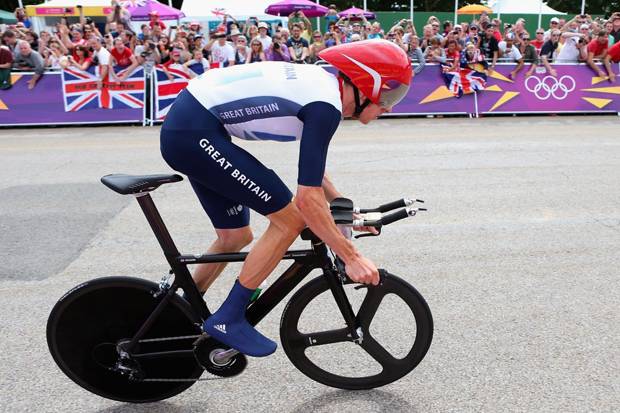There’s been much talk recently, in the media and elsewhere, about the Wiggins effect. It being wondered if, as a result of the recent successes of Bradley Wiggins in competitive cycling (in Tour de France 2012 and the London 2012 Olympics), more people will take up cycling.
Much of this focus is of course on the competitive element of cycling and it might well be the case that people will start to take an interest in the sport – and possibly might even boost the numbers taking part, who knows. It’s interesting though that Bradley Wiggins and Chris Boardman (who set the ball rolling with the recent British successes in cycling sport) have both mentioned cycling as a means of everyday transport as well as for sport. To my way of thinking that is a good thing. Bicycles can be a practical means of getting around, doing the shopping, and so forth.
Of course if you haven’t cycled in years or aren’t quite as fit as you might be, then cycling can seem more chore than fun, impractical as it seems just too hard, rather than practical. And that of course is where an electric bike can come in – it did for me some years ago. Got me back into cycling despite not being as fit as I once was back in my teens – and once riding the bike with the electric motor, well the realisation came that this is fun, as well as practical.
The problem might be of course that although an electric bike can make cycling accessible to those less fit – the fact that electric bikes are often very expensive can be itself a reason why cycling again seems inaccessible. There are many expensive electric bikes available, and many of those expensive electric bikes do perform superbly, while the cheaper ones might often perform well at first, but soon problems arise, especially with the batteries, and then…. Well perhaps the bike goes into the shed or garage and is forgotten, the purchase regretted?
However their are reasonably cheap and affordable routes into electrically assisted cycling – one such method is buying a kit to fit (or to have fitted) to an existing bike. Again many are available and again there are some that are very expensive (and work very well) and others that seem cheap, but perhaps might not last very long.
From my own experience though, I would say there is a reasonably cheap option available which will do the job and that will give good service over many years. I’m talking about the Currie Pro Drive – an American made kit. I bought one second hand off the internet years ago and it has served me well – I’ve fitted it to a variety of bikes; my Rebike recumbent, where it worked well pulling me up steep hills on what is a rather heavy bike, and also on a mountain bike where it helped me get places pretty quickly on the road and even took me along some rather muddy and bumpy bridleways and forest tracks while doing a bit of off roading. All in all I’d say the Currie Pro Drive is a practical and fairly affordable route into electric cycling – tried and tested technology that perhaps looks a little less sophisticated than some of the more recent and/or expensive kits, but it works and it works well. Powerful little motor which on a 26″ wheel bike (standard mountain bike sized wheel) will take you up to the legal limit of 15mph, it will pull you up hills if you do your share of pedalling as well – and with the Lead Acid batteries that come with it as standard you know you have the energy available to take you 10 miles or so on mixed terrain if you pedal a bit as well.
So how much might you pay – well from Electric Mountain Bikes near Glastonbury the Currie kit is available for £400 (http://electricmountainbikes.blogspot.co.uk/2008/04/currie-electro-drive.html) and possibly second hand ones might come up on Ebay now and then.
Oh and a little word on batteries – many electric bikes now come with Lithium Ion batteries and they are generally considered state of the art, but they are expensive and have been prone to malfunction on the cheaper electric bikes – meaning expensive replacements and so on – it’s definitely a good idea to check what guarantee there is on the battery, the better packages include a proviso that if a Lithium Ion battery loses it’s ability to hold a set level of charge within 1 or sometimes 2 years of purchase it will be replaced. The Lead Acid batteries as used on the Currie Pro Drive (and elsewhere) are old technology, and hold less charge per kilogram – but they are reliable and cheap to replace.
Anyway to return to the Wiggins Effect – let’s hope there is one, and if you feel too unfit to participate, why not try electric. You might even find that you are fitter than suspected or maybe after a few months cycling electrically assisted, discover fitness returning and either move onto a non assisted bike or just enjoy the whole cycling experience more and find yourself out there on two wheels when you used to be on four.

